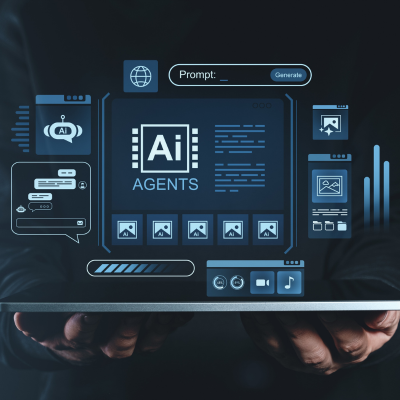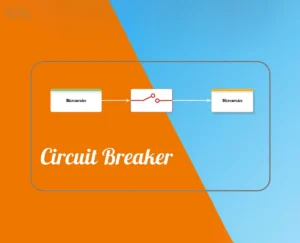Edge computing for software engineers is no longer a niche technology but a critical foundation for building the next generation of distributed systems. By bringing data processing closer to where data is generated—at IoT devices, sensors, and edge nodes—engineers can design applications that deliver real-time computing, enable IoT development, support low-latency apps, and seamlessly integrate cloud-edge integration resources. As 5G networks and edge AI mature, software engineers must adapt by mastering new tools, architectures, and security models to build scalable, secure, and high-performance edge solutions. This article explores the latest trends, practical tactics, and strategic considerations shaping edge computing in 2025, alongside how Amquest Education’s Software Engineering, Agentic AI and Generative AI course equips engineers to lead in this transformative landscape.
The Evolution of Edge Computing: From Cloud to the Edge
Edge computing shifts data processing and analytics from centralized cloud data centers to the network edge—closer to the data sources such as IoT devices, smartphones, and industrial sensors. This proximity reduces latency, enhances real-time decision-making, and optimizes bandwidth by minimizing the need for data to travel long distances to the cloud. While cloud computing revolutionized IT infrastructure over the past decade, its limitations in latency, bandwidth costs, and scalability for real-time computing applications have driven enterprises to adopt edge architectures.
According to IDC, by 2025, 50% of new business IT infrastructure will be deployed at the edge, marking a fivefold increase since 2020. This shift reflects growing demand for low-latency, high-throughput applications in industries including automotive, healthcare, retail, and manufacturing.
Key Trends Shaping Edge Computing in 2025
5G and Edge Computing Synergy
The deployment of 5G networks, offering ultra-low latency under one millisecond and download speeds up to 20 Gbps, is a breakthrough for edge computing. This synergy enables real-time computing essential for critical applications like autonomous vehicles, remote surgery, and immersive AR/VR experiences, where delays of even milliseconds can be detrimental. Strategically located edge data centers within 5G infrastructure process data locally, reducing cloud workloads and ensuring rapid response times. This distributed approach optimizes performance without compromising on scalability or reliability.
Edge AI and On-Device Processing
Embedding edge AI capabilities directly into edge devices transforms them from simple data collectors into intelligent decision-makers. Frameworks such as TensorFlow Lite and OpenVINO make it easier to deploy lightweight AI models on resource-constrained devices like IoT sensors, wearables, and industrial equipment. Micro AI enables localized inference for critical use cases like predictive maintenance and fault detection, significantly improving operational efficiency while reducing cloud dependency. This trend accelerates IoT development by empowering devices to analyze and act on data in real time.
Containerization and Virtualization at the Edge
Containerization and virtualization technologies have become standard for managing distributed edge workloads. Deploying containerized applications via Kubernetes and similar orchestration tools enables scalability, consistent environments, and simplified updates across diverse edge nodes. These technologies support complex AI and IoT applications by ensuring robust deployment pipelines and operational flexibility, essential for maintaining performance across geographically dispersed edge infrastructure.
Security, Privacy, and Data Governance
Decentralizing data processing introduces new security challenges. Protecting edge nodes from cyber threats and ensuring data privacy require robust encryption, zero-trust authentication models, and continuous monitoring. Hybrid cloud-edge integration architectures balance the advantages of local processing with centralized control, optimizing security and operational cost. Additionally, data governance policies must evolve to address compliance and dynamic data management at the edge, ensuring accurate, private, and secure data handling across distributed systems.
Interoperability and Orchestration Challenges
Edge environments are inherently heterogeneous, composed of diverse hardware and software components. This complexity demands sophisticated orchestration tools and vendor-neutral platforms that support container management and infrastructure automation. Effective edge management and orchestration (EMO) platforms unify control, enable zero-touch provisioning, and support out-of-band management to streamline operations and reduce knowledge debt. These capabilities are critical to scaling edge deployments efficiently while maintaining agility and security.
Sustainability and Energy Efficiency
Edge computing also supports sustainable IT practices by reducing data transmission to centralized cloud data centers, lowering energy consumption and carbon emissions. Localized processing optimizes resource utilization, creating greener, cost-effective computing architectures that align with corporate sustainability goals.
Advanced Tactics for Software Engineers in Edge Computing
- Design for Low Latency and Real-Time Processing: Employ event-driven architectures and local analytics to minimize delays and enable immediate insights.
- Leverage Edge AI Frameworks: Master lightweight AI tools like TensorFlow Lite to enable on-device inference, reducing reliance on cloud connectivity.
- Implement Robust Cloud-Edge Integration: Architect seamless data synchronization and failover between edge nodes and central cloud platforms to ensure resilience.
- Adopt Containerization and Orchestration: Utilize Kubernetes and container technologies tailored for edge environments to simplify deployment, scaling, and updates.
- Prioritize Edge Security and Data Governance: Implement zero-trust security models, encrypted communication, and compliance frameworks for decentralized data.
- Exploit 5G Capabilities: Harness ultra-low latency and high bandwidth of 5G to support bandwidth-intensive and real-time edge applications.
- Embrace Vendor-Neutral Platforms: Choose extensible, interoperable edge management solutions to support diverse hardware and software ecosystems.
Community and Open Innovation in Edge Computing
Communities of practice play a crucial role in demystifying edge computing and accelerating adoption. Open-source frameworks, modular edge SDKs, and collaborative forums foster innovation and knowledge exchange among developers and engineers. Real-world case studies, user-generated content, and partnerships with industry thought leaders help translate complex edge architectures into practical insights, inspiring software engineers to experiment and build cutting-edge solutions.
Measuring Success: Analytics and Insights at the Edge
Real-time analytics at the edge empower proactive decision-making. Key performance indicators include latency reduction, bandwidth savings, operational uptime, and AI inference accuracy. Monitoring these metrics guides continuous optimization of edge deployments, ensuring business goals are met.
Business Case Study: Siemens’ Edge AI-Driven Manufacturing Transformation
Siemens leveraged edge computing combined with AI-powered predictive maintenance across its manufacturing plants. By deploying edge nodes equipped with Micro AI to monitor equipment health, Siemens reduced unexpected downtime by 30% and cut maintenance costs by 25%. This edge-first strategy enabled real-time fault detection without overwhelming cloud infrastructure, highlighting financial and operational benefits achievable through intelligent edge architectures.
Actionable Tips for Software Engineers in Edge Computing
- Master Edge AI Frameworks: Gain hands-on experience with TensorFlow Lite, OpenVINO, and similar tools.
- Understand 5G Networks: Study how 5G impacts latency and throughput in edge applications.
- Build Containerization Skills: Practice deploying containerized applications on edge nodes using Kubernetes.
- Focus on Security: Learn zero-trust models and encryption techniques for distributed edge systems.
- Engage with Industry Communities: Participate in forums, conferences, and open-source projects related to edge computing.
- Pursue Hands-On Learning: Seek internships and practical training, such as those offered by Amquest Education, to gain real-world experience.
Why Choose Amquest Education’s Software Engineering, Agentic AI and Generative AI Course?
Amquest Education, headquartered in Mumbai with nationwide online accessibility, offers an industry-aligned program tailored for software engineers aiming to excel in edge computing and AI-driven development. Key strengths include:
- AI-Led Curriculum with Hands-On Projects: Integrates agentic AI and generative AI with practical edge computing assignments to build deep technical expertise.
- Experienced Faculty and Industry Experts: Learn from professionals with real-world experience in distributed systems and AI.
- Strong Industry Partnerships and Internships: Access opportunities to work in cutting-edge edge computing environments.
- Comprehensive Coverage of Emerging Technologies: Including 5G, edge AI, on-device processing, and cloud-edge integration.
- Flexible Learning Options: Catering to diverse learners across India with a Mumbai presence and online delivery.
This course equips software engineers to design, develop, and deploy scalable, secure, and intelligent edge solutions that meet evolving business demands.
Conclusion
Edge computing for software engineers is essential for building future-proof distributed systems that deliver real-time, low-latency experiences. The convergence of 5G, edge AI, containerization, and robust security models is accelerating adoption across industries. Software engineers must upskill in these areas to stay competitive and innovate effectively. Amquest Education’s Software Engineering, Agentic AI and Generative AI course offers comprehensive, hands-on training to prepare you for this dynamic field. Explore the course today and position yourself at the forefront of the edge computing revolution.
Frequently Asked Questions (FAQs)
Q1: How does edge computing improve real-time computing?
Edge computing processes data near its source, drastically reducing latency and enabling immediate decision-making, critical for applications like autonomous vehicles and industrial automation.
Q2: What role does 5G play in edge computing for software engineers?
5G provides ultra-low latency and high bandwidth, allowing edge devices to communicate and process data in real time, essential for remote surgery, AR/VR, and more.
Q3: How is IoT development impacted by edge computing?
Edge computing enables IoT development by allowing devices to analyze data locally, reducing cloud dependency and enabling faster responses in smart sensors, wearables, and industrial IoT applications.
Q4: What are low-latency apps in the context of edge computing?
Low-latency apps require minimal delay between input and response, such as self-driving cars or real-time video analytics, made possible by processing data at the edge.
Q5: How do distributed systems benefit from cloud-edge integration?
Cloud-edge integration balances workloads between centralized cloud resources and localized edge nodes, optimizing performance, cost, and security.
Q6: What are the security challenges of edge computing?
Edge computing decentralizes data processing, increasing attack surfaces. It requires strong encryption, authentication, and hybrid cloud-edge strategies to protect data and maintain compliance.










